#National science museum
Text
it's science

can't argue with the facts

7K notes
·
View notes
Text
பத்தாம் வகுப்பு தேர்ச்சி போதும் | தேசிய அறிவியல் மையத்தில் பணியிடங்கள் வெளியாகியுள்ளன..!
பத்தாம் வகுப்பு தேர்ச்சி போதும் | தேசிய அறிவியல் மையத்தில் பணியிடங்கள் வெளியாகியுள்ளன..!
#Freegovtjobs #jobrascals
தேசிய அறிவியல் மையத்தில் பின் வரும் Technician பணிகள் நிரப்புவதற்கான அறிவிப்பு வெளியாகியுள்ளன. மத்திய அரசு இந்த அதிகாரப்பூர்வ அறிவிப்பினை வெளியிட்டுள்ளது. தேசிய அறிவியல் மையம் பணிக்கு விண்ணப்பிக்க ஆர்வமுள்ளவர்கள் 23/11/2022 முதல் 12/12/2022க்குல் அஞ்சல் மூலமாக விண்ணப்பிக்கவும். இப்பணிக்கு விண்ணப்பிக்கும் நபர்கள் விண்ணப்பிக்கும் முன்பு கீழ்க்கண்ட கல்வித் தகுதி , வயது விவரம் , ஊதிய விவரம்…

View On WordPress
#delhi science museum#delhi science museum ticket#national science center#national science center delhi#national science centre#national science centre delhi#national science centre delhi ticket price#national science centre new delhi#national science museum#national science museum delhi#NSC Recruitment 2022 08 Office Assistant Posts#science museum#science museum delhi#science museum delhi complete information#science museum delhi complete tour#science museum delhi open#science museum delhi ticket price
0 notes
Text
youtube
#National science museum#National science centre#Museum#Science#Museum in Delhi#nomadicganeshsingh#youtube#Youtube
0 notes
Text
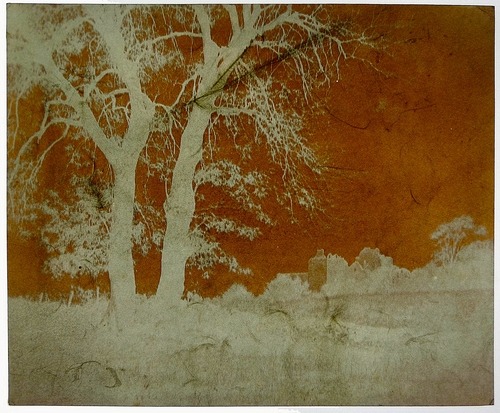
William Henry Fox Talbot
Doune Castle, Scotland
1844
Calotype negative
National Science and Media Museum
1937-4030, Schaaf 2040
#Henry Fox Talbot#Doune Castle#Scotland#1844#Calotype negative#National Science and Media Museum#photography#William Henry Fox Talbot
304 notes
·
View notes
Text
New wasp species named after Doctor Who villain
‘Dalek’ wasps are among 815 new species described by Natural History Museum scientists in 2023
Nilima Marshall - 4 hours ago
Fourteen newly discovered species of wasps have been named after the villainous Daleks from Doctor Who to mark the 60th anniversary of the popular sci-fi series.
The insects, which bear the genus “Dalek”, are among the 619 new wasp species described this year by London’s Natural History Museum (NHM).
An alien warrior race of mutants, the Daleks are the formidable bad guys in BBC’s long-running TV show.
I thought it was a good name for a genus and a bit of fun having been a big fan of Doctor Who in my early years
Dr John Noyes, NHM
One particular species of wasp from Costa Rica called Dalek nationi also honours Terry Nation, the Welsh screenwriter and novelist who created the mutant race that terrified children for the past six decades.
Dr John Noyes, scientific associate at the NHM, said: “I thought it was a good name for a genus and a bit of fun having been a big fan of Doctor Who in my early years.”
A total of 815 new species were described by NHM scientists in 2023, including a 407-million-year-old parasitic fungus named after children’s author Beatrix Potter.
Potteromyces asteroxylicola was discovered infecting the roots of ancient plants and is thought to be the earliest disease-causing fungus ever discovered.
The researchers said they wanted to honour Potter’s reputation as a dedicated mycologist – someone who studies and works with fungi.
Dr Christine Strullu-Derrien, scientific associate at the NHM, who helped identify the new Potter fungus, said: “Naming this important species after Beatrix Potter seems a fitting tribute to her remarkable work and commitment to piecing together the secrets of fungi.”
Highlights also include fossil remains of a new dinosaur species found on the Isle of Wight, which was named Vectipelta barretti after NHM Professor Paul Barrett who worked there for two decades.
It is first the dinosaur discovered on the island for 142 years.
Other notable discoveries also include fossil remains of a giant penguin called Kumimanu fordycei – believed to be the largest penguin that ever lived – and nine new species of bristle worms including two bone-eating worms.
The researchers also report new species being discovered in “unremarkable” urban environments, including a stick insect called Micropodacanthus tweedae that was found on the side of a bin in Australia, and a moth that was located in Ealing, west London, called Tachystola mulliganae, which turned out be a new species native to Western Australia.
T. mulliganae is named after Barbara Mulligan, a lifelong moth enthusiast who discovered the species.
Mark Sterling, a scientific associate at NHM, described the finding as “real coup for citizen science”.
The new species descriptions contributed to the 722 new research papers released by the NHM over the past 12 months.
20 notes
·
View notes
Text
Hachiko: The world's most loyal dog turns 100
2 July 2023

The Chinese tagline on the movie poster says it all: "I will wait for you, no matter how long it takes."
It tells the true story of Hachiko, the faithful dog that continued to wait for its master at a train station in Japan long after his death.
The cream white Akita Inu, born 100 years ago, has been memorialised in everything from books to movies to the cult science fiction sitcom Futurama.
And the Chinese iteration - the third after a Japanese version in 1987, and the Richard Gere-starrer in 2009 - is a hit at the box office.
There have been tales of other devoted hounds such as Greyfriars Bobby, but none with the global impact of Hachiko.
A bronze statue of him has stood outside Shibuya Station in Tokyo, where he waited in vain for a decade, since 1948.
The statue was first erected in 1934 before being recycled for the war effort during World War Two.
Japanese schoolchildren are taught the story of Chuken Hachiko - or loyal dog Hachiko - as an example of devotion and fidelity.
''Hachiko represents the ideal Japanese citizen with his unquestioning devotion," says Professor Christine Yano of the University of Hawaii - "loyal, reliable, obedient to a master, understanding, without relying upon rationality, their place in the larger scheme of things."
The story of Hachiko
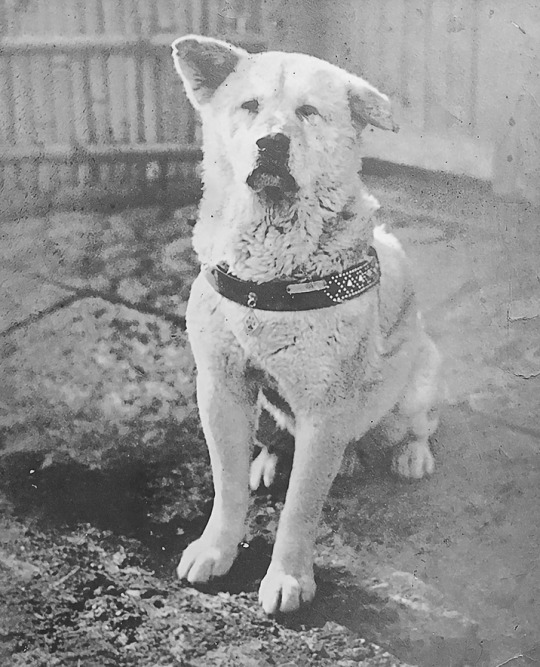
Hachiko was born on 10 November 1923 in the city of Odate in Akita prefecture, the original home of Akitas.
A large-sized Japanese dog, the Akita is one of the country's oldest and most popular breeds.
Designated by the Japanese government as a national icon in 1931, they were once trained to hunt animals like wild boar and elk.
"Akita dogs are calm, sincere, intelligent, and brave [and] obedient to their masters," said Eietsu Sakuraba, author of an English language children's book about Hachiko.
"On the other hand, it also has a stubborn personality and is wary of anyone other than its master."
The year Hachiko was born, Hidesaburo Ueno, a renowned agricultural professor and a dog lover, asked a student to find him an Akita puppy.

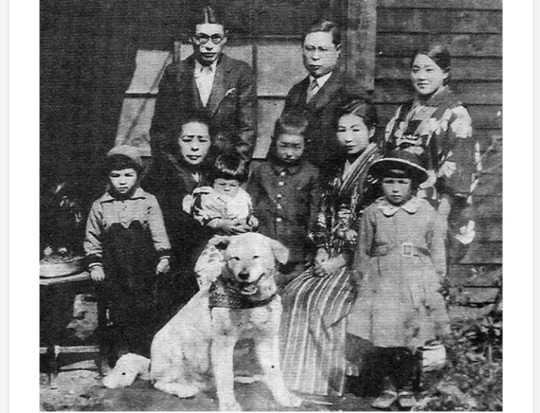
After a gruelling train journey, the puppy arrived at the Ueno residence in Shibuya district on 15 January 1924, where it was initially thought dead.
According to Hachiko's biographer, Prof Mayumi Itoh, Ueno and his wife Yae nursed him back to health over the next six months.
Ueno named him Hachi, or eight in Japanese. Ko is an honorific bestowed by Ueno's students.
The long wait

Ueno took a train to work several times a week. He was accompanied to Shibuya station by his three dogs, including Hachiko. The trio would then wait there for his return in the evening.
On 21 May 1925, Ueno, then 53, died of a cerebral hemorrhage. Hachiko had been with him for just 16 months.
"While people were attending the wake, Hachi smelled Dr Ueno from the house and went inside the living room. He crawled under the coffin and refused to move," writes Prof Itoh.
Hachiko spent the next few months with different families outside Shibuya but eventually, in the summer of 1925, he ended up with Ueno's gardener Kikusaburo Kobayashi.
Having returned to the area where his late master lived, Hachiko soon resumed his daily commute to the station, rain or shine.
"In the evening, Hachi stood on four legs at the ticket gate and looked at each passenger as if he were looking for someone," writes Prof Itoh.
Station employees initially saw him as a nuisance. Yakitori vendors would pour water on him and little boys bullied and hit him.
However, he gained nationwide fame after Japanese daily Tokyo Asahi Shimbun wrote about him in October 1932.

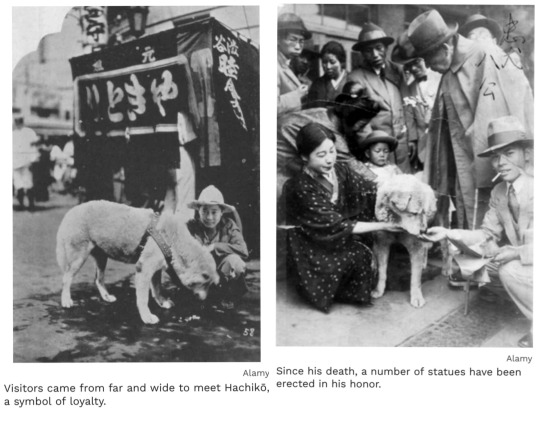
The station received donations of food for Hachiko each day, while visitors came from far and wide to see him.
Poems and haikus were written about him. A fundraising event in 1934 to make a statue of him reportedly drew a crowd of 3,000.
Hachiko's eventual death on 8 March 1935 at the age of 11 made the front page of many newspapers. He was found on a street in Shibuya.
In March 2011, scientists finally settled the cause of death of Hachikō: the dog had both terminal cancer and a filaria infection.
There were also four yakitori skewers in Hachikō's stomach, but the skewers did not damage his stomach nor cause his death.

At his funeral, Buddhist monks offered prayers for him and dignitaries read eulogies. Thousands visited his statue in the following days.
In impoverished post-war Japan, a fundraising drive for a new statue of Hachiko even managed to raise 800,000 yen, an enormous sum at the time, worth about 4bn yen (£22m; $28m) today.
"In retrospect, I feel that he knew that Dr Ueno would not come back, but he kept waiting - Hachiko taught us the value of keeping faith in someone," wrote Takeshi Okamoto in a newspaper article in 1982.
As a high school student, he had seen Hachiko at the station daily.
Remembering Hachiko
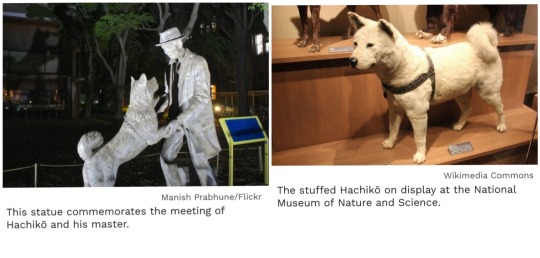
Every year on 8 April, a memorial service for Hachiko is held outside Shibuya Station.
His statue is often decorated with scarves, Santa hats and, most recently, a surgical mask.
His mount is on display at the National Museum of Nature and Science in Tokyo.
Some of his remains are interred at the Aoyama Cemetery, alongside Ueno and Yae.
Statues of him have also been cast in Odate, Ueno's hometown Hisai, the University of Tokyo and Rhode Island, the American setting for the 2009 movie.
Odate also has a series of events lined up this year for his 100th birthday.
Will the world's most loyal dog still be celebrated a century from now? Prof Yano says yes because she believes the "heroism of Hachiko" is not defined by any particular period - rather it is timeless.
Mr Sakuraba is equally optimistic.
"Even 100 years from now, this unconditional, devoted love will remain unchanged, and the story of Hachiko will live on forever."

🤍🐕🤍
#Hachiko#Akita Inu#Greyfriars Bobby#Shibuya Station#Tokyo#Japan#Chuken Hachiko#loyal dog Hachiko#dogs#animals#animal love#Akita prefecture#Odate#Hidesaburo Ueno#Tokyo Asahi Shimbun#Prof Mayumi Itoh#Kikusaburo Kobayashi#Takeshi Okamoto#April 8#National Museum of Nature and Science#Aoyama Cemetery#Akita#Hachiko @100#loyal dog
42 notes
·
View notes
Text
For #WomensHistoryMonth, here is the official portrait of Julie Packard (b. 1953) from the Monterey Bay Aquarium and MBARI
now in the permanent collection of the Smithsonian National Portrait Gallery:


Artist: Hope Gangloff, born 1974
Sitter: Julie Packard, born 1953
Date: 2019
Type/Medium: Painting, Acrylic on canvas
Dimensions in Frame: 212.1 × 141 × 6.4 cm (83 1/2 × 55 1/2 × 2 1/2")
Smithsonian National Portrait Gallery NPG.2019.3
#Julie Packard#Monterey Bay Aquarium#MBARI#aquarium#ocean conservation#marine conservation#portrait#painting#American art#contemporary art#2010s#Smithsonian National Portrait Gallery#Womens History Month#women artists#women in science#womein in STEM#museum visit#animals in art
41 notes
·
View notes
Text


Dawn Of The Final Day
Inspired by this photo of Miss Atomic Bomb from the Nuclear Science & History Museum in Albuquerque, NM
#barbenheimer#barbie#barbie 2023#barbie movie#oppenheimer#national museum of nuclear science & history#new mexico#miss atomic bomb#7/21/23#i survived the barbocalypse 2023#lee merlin#art
14 notes
·
View notes
Text






James Caird – Scientist of the Day
James Caird, a Scottish shipping magnate, lover of maritime history, and philanthropist, died Sep. 27, 1954, at age 90.
read more...
#James Caird#museums#maritime#National Maritime Museum histsci#histSTM#20th century#history of science#Ashworth#Scientist of the Day
8 notes
·
View notes
Photo

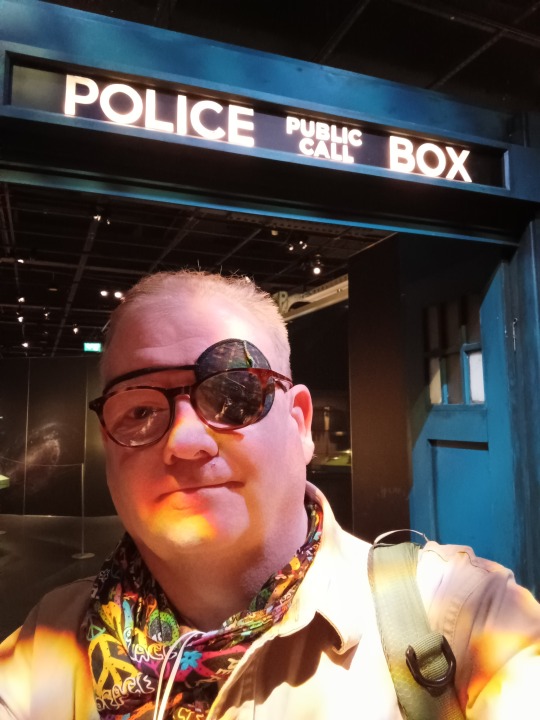
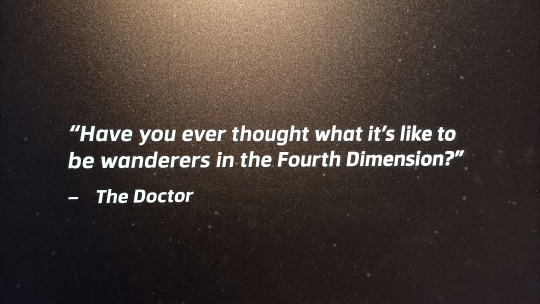



Entering the fourth dimension..............well the Dr Who Exhibition at National Museum of Scotland, which is the nearest we can expect just now!
#dr who#doctor who#Edinburgh#Scotland#the national museum#national museum of scotland#chambers street#science fiction#time travel#time traveler#television#history#phone pix
34 notes
·
View notes
Text
Photography of the Day - Dinosaur
A Tyrannosaurus Rex at the National Museum of Scotland, in Edinburgh.
Dinosaur – Photo by Raffaello Palandri

View On WordPress
#Black & White#black and white#black and white photography#Dinosaur#Edinburgh#living abroad#museum#National Museum of Scotland#photo#photo of the Day#photography#Photography of the day#POTD#Raffaello Palandri#Raffaello Palandri photography#science#Scotland#T. Rex#travel#travel photography#Tyrannosaurus rex
19 notes
·
View notes
Text
‘Magical moment’ as fire-ravaged Brazil museum receives big fossil donation
Collection of more than 1,000 fossils including rare dinosaurs given to National Museum in Rio six years after devastating blaze

Nearly six years after it was engulfed by a devastating fire that inflicted incalculable damage on Brazil’s cultural heritage, the country’s national museum has received an important donation of more than a thousand fossils as part of a campaign to help rebuild the collection lost to the flames.
The fire, caused by an electrical short-circuit on the night of 2 September 2018, consumed the former imperial palace which housed the 200-year-old museum in a park just north of Rio de Janeiro’s city centre and destroyed about 85% of its archive of 20m artefacts.
Losses included Egyptian and Greco-Roman relics acquired by the Brazilian imperial family, a large dinosaur named Dinoprata, and invaluable records of Indigenous life and culture in pre-colonial times.
Efforts are now under way to rebuild the collection ahead of the museum’s planned reopening in April 2026. Reconstruction works on St Christopher’s Palace began in 2021. The restored facade and front courtyard were unveiled a year later, but works continue on the rest of the building.
Continue reading.
#brazil#brazilian politics#politics#national museum of brazil#science#biology#paleontology#mod nise da silveira#image description in alt
4 notes
·
View notes
Text




Apollo 8 - December 21 - 27, 1968
Frank Borman, Jim Lovell, & Bill Anders
Museum of Science and Industry, Chicago, IL
51 notes
·
View notes
Text
Daylight Saving Time, Edo style

These Edo-period clocks are on display at the National Museum of Nature and Science in Ueno, Tokyo. They are unusual in two ways: the display looks kind of like a ruler, and you may notice on the left example that the marks are irregular. This would seem to suggest that hours in one half of the day are considerably shorter than in the other half.
The basic idea is that the Sun always rose at 6 in the morning and always set at 6 in the evening. In between, the same number of hours, no matter the season. This means that in the summer, an hour was quite a bit longer than an hour in winter, and vice-versa for the nights. It turns out the Romans were doing this too, on a more elementary scale as their clocks were sundials, and soon noticed that they weren't getting as much rest at some times of the year...
Today, most of Europe and the US have Daylight Saving Time, and we're going through the "ugh, clocks forward, less sleep" movement in Europe tonight. But let's take a moment to consider that the owners of these clocks would have owned a set of rulers and changed them each month!
#Japan#Tokyo#National Museum of Nature and Science#clock#Daylight Saving Time#Edo period#江戸時代#時計#2016-11
3 notes
·
View notes
Text
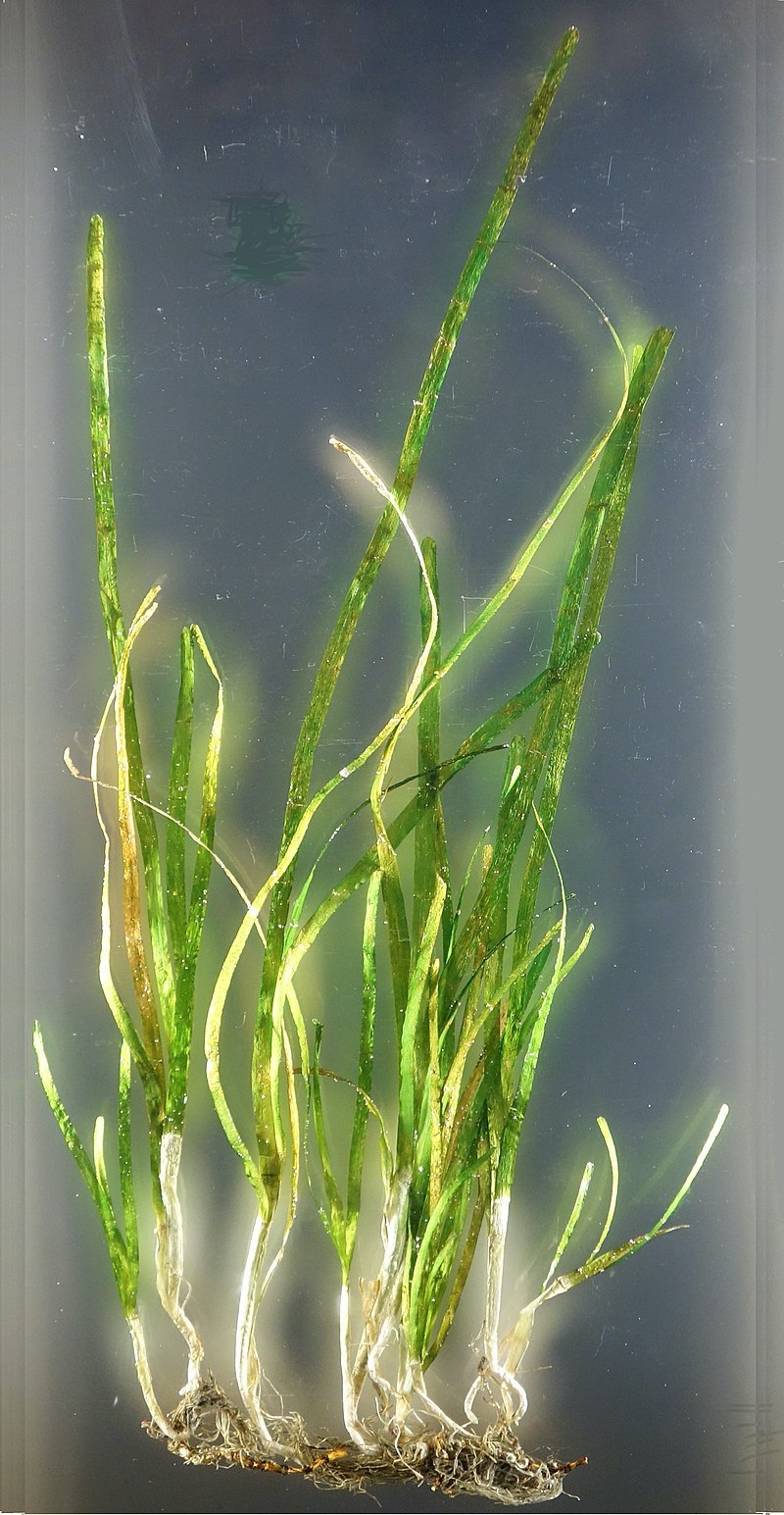
6 notes
·
View notes
Text
As a kid, Bill Nye spent whole days wandering the halls of Smithsonian museums. Now the Science Guy is back… to find his own blue lab coat and periodic table bowtie on display at the National Museum of American History. We sit down with Bill Nye to get schooled on science education, comedy, and the 1990s hit TV show that turned him into an entire generation’s favorite science teacher.
#Bill Nye the Sidedoor Guy#Bill Nye#sidedoor podcast#the smithsonian#TV#1990s#National Museum of American History#science#podcast#podcasts#tv history
6 notes
·
View notes